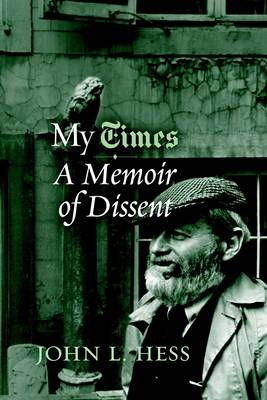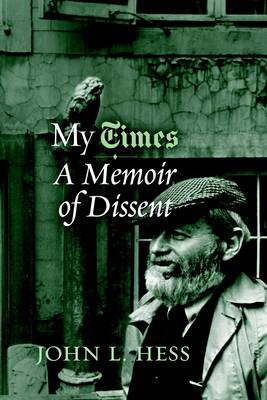
- Afhalen na 1 uur in een winkel met voorraad
- Gratis thuislevering in België vanaf € 30
- Ruim aanbod met 7 miljoen producten
- Afhalen na 1 uur in een winkel met voorraad
- Gratis thuislevering in België vanaf € 30
- Ruim aanbod met 7 miljoen producten
Zoeken
Omschrijving
My Times is a critical look at The New York Times from the inside. John Hess worked at the paper for twenty-four years as an editor, rewrite man, foreign correspondent, investigative reporter, and food critic, from New York to Paris to the Middle East and back. In his tenure Hess rubbed shoulders and butted heads with some of the notable figures of journalism from the last fifty years, including Cyrus Sulzberger and his cousin Punch, A. M. Rosenthal, Seymour Hersh, Scotty Reston, and Homer Bigart.
But this isn't a lives of the saints; reporters, to Hess's observation, mostly churned out unambitious, conformist copy, and when they didn't, editors would "fix" it. He argues that the paper deliberately fudged its coverage of Vietnam at a crucial turn. He revisits the close association of the Sulzberger publishing family with the world leaders the newspaper purported to cover objectively. Later Hess shows that the Times was far better acquainted with the jet-set than with its neglected backyard; few at the paper in the 1970s seemed able to pick out the Bronx on a map. My Times is not without warmth for the Good Gray Lady. Hess praises individual reporters and editors, and notes that working for "the most influential paper in the world" gave him a platform to pursue various campaigns for justice, a few of which he recaps here: the journalistic prairie fire he set in connection with the New York State nursing home scandal; his exposé of shenanigans at the Metropolitan Museum of Art; and his revelation of corruption in several administrations at City Hall.
But this isn't a lives of the saints; reporters, to Hess's observation, mostly churned out unambitious, conformist copy, and when they didn't, editors would "fix" it. He argues that the paper deliberately fudged its coverage of Vietnam at a crucial turn. He revisits the close association of the Sulzberger publishing family with the world leaders the newspaper purported to cover objectively. Later Hess shows that the Times was far better acquainted with the jet-set than with its neglected backyard; few at the paper in the 1970s seemed able to pick out the Bronx on a map. My Times is not without warmth for the Good Gray Lady. Hess praises individual reporters and editors, and notes that working for "the most influential paper in the world" gave him a platform to pursue various campaigns for justice, a few of which he recaps here: the journalistic prairie fire he set in connection with the New York State nursing home scandal; his exposé of shenanigans at the Metropolitan Museum of Art; and his revelation of corruption in several administrations at City Hall.
Specificaties
Betrokkenen
- Auteur(s):
- Uitgeverij:
Inhoud
- Aantal bladzijden:
- 271
- Taal:
- Engels
Eigenschappen
- Productcode (EAN):
- 9781583226049
- Verschijningsdatum:
- 2/09/2003
- Uitvoering:
- Hardcover
- Formaat:
- Genaaid
- Afmetingen:
- 144 mm x 218 mm
- Gewicht:
- 467 g

Alleen bij Standaard Boekhandel
+ 92 punten op je klantenkaart van Standaard Boekhandel
Beoordelingen
We publiceren alleen reviews die voldoen aan de voorwaarden voor reviews. Bekijk onze voorwaarden voor reviews.











